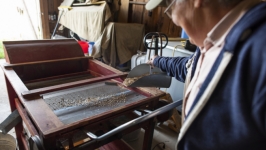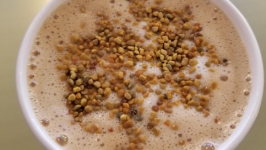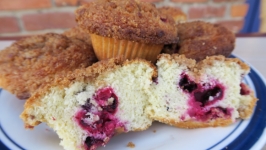Growing Future Farmers: Greentree Naturals’ Diane Green on Producing Food, Preparing the Next Generation
Getting to Greentree Naturals Certified Organic Farm takes you north of majestic Lake Pend Oreille, through the lumber-turned-resort town of Sandpoint, and across the lowlands between Selkirk Mountains to the west and the forested foothills of the Cabinet Mountains to the east. Lake and forest, flatland and mountains: north Idaho’s panhandle is a land of contrasts, of gnarly winters that lure adventurers to nearby Schweitzer Mountain Resort, but also a land of rich, post-glacial soil and of seasons surprisingly amenable to farming. If you know what you’re doing, that is, which Greentree’s Diane Green most certainly does.
“I’ve been gardening since the ’70s,” says Green, who struck out on her own from oklahoma at 17 and is a self-described ol’ hippie.
Her love of and interest in plants came naturally, says Green, who lived in a school bus for six years, learning gardening from back-to-the-land folks who couldn’t afford chemicals. Thus the foundation for growing organically was instilled early. She settled in the northwest, studied plant biology and horticulture at Spokane Community College in eastern Washington and landed a job with the United States Forest Service (USFS) in Coeur d’Alene, Idaho, propagating native shrubs.
By the time Green moved to Sandpoint, she’d worked for the USFS in remote woods, traveling in the off-season and honing plans for a native plant nursery. Then she met Thom Sadoski, who also worked for the USFS and had grown up on a farm. Like that, her plans changed: the nursery would be a garden.
“Nothing that happens here could happen without the two of us,” says Green, who attributes Greentree Farms’ success to partnerships and building community with customers, other farmers and related organizations.
“People want to know their farmer,” says Green, who has embraced technology to develop one-on-one relationship marketing strategies, including a website full of photos, testimonials and information for customers and would-be farmers. On a Facebook market garden site she recently joined, for example, she was asked how she establishes customer loyalty. Green’s response was straightforward, yet heartfelt: “I know their names.”
Indeed, on summer Saturdays in Sandpoint, folks stop by the farmers market to hug and say hello to Green, buying fresh basil, braided garlic or any number of value-added items like tinctures or jam. A stalwart presence for 28 of the market’s 30 years, Green helped organize and promote the market, in addition to selling Greentree produce: 90-plus items, including numerous varieties of tomatoes, peppers, squash and beans, culinary herbs and her beloved flowers.
The flower garden—in the shape of a native American medicine wheel—dates to the beginning of Greentree. Green and Sadoski carved out two-and-a-half acres of fenced growing space, a chicken enclosure and a greenhouse. Outbuildings occasionally occupied by interns and the home where they live sit on the rise above the garden. In the evenings, after a long day in the garden, Green says that’s where the couple “survey their domain” (as Sadoski jokingly calls it).
In recent years, Green has curtailed her market offerings and added a farm stand on the property, which doubles as a pickup site for the community-supported agriculture (CSA) harvest subscription membership she’s offered since 1996—the first one in Bonner County.
Green supplements her CSA with products from other farms as needed, which is but one example of her pioneering marketing savvy. Green created and ran a grower’s collective from 1998 to 2006, for example, with five farms at different elevations yielding staggered harvests. Greentree was the first farm to direct-market to restaurants—DiLuna’s and Ivano’s Ristorante, to whom she still sells— which Green documented in a farmer’s guide for selling to restaurants. Well before the farm-to-table trend, Green hosted events like a Sunday Brunch called “Sunday Afternoon Delightfully Decadent High Tea.”
At every juncture, Green and Sadoski would ask themselves: Is it sustainable? Is it cost-effective?
Future projects get the same scrutiny. Veteran seed savers—they’ve been certified organic since 1992 so are adept at recordkeeping— they’ve produced tomatoes averaging one-pound apiece, which they’ll provide to Snake River Seed Co-op. Hopefully.
“It’s been a very humbling experience,” says Green, laughing lightly as she describes challenges they’ve had ramping up their seed saving process. She’s prepared for success, she says, but also failures. “That’s farming.” Green has learned to takes things in stride, adding, “One of my biggest lessons over time has been acknowledging that I don’t have to do everything.”
Green tells the story about doing web updates on her computer, remembering her brother’s advice not to press a certain button. When she accidentally deleted her website, she knew it was time to pass off the task, and now trades web work for a CSA membership.
She’s also discovered the joy in sharing her knowledge, which she described in a 2012 KSPS public television documentary. “I want to make sure I’m growing the next generation of farmers,” says Green, who developed an internship program in 1996 after being approach by a woman at the farmers market.
Greentree has since hosted numerous on-farm interns, most of them women. “I think a lot of the young women who come [to Greentree] are interested in agriculture, market farming, getting back to the land,” says Green.
Alicia Best Bier spent three summers with Greentree, starting in 2003, and recently returned to Sandpoint after working on both goat and produce farms. Best Bier assists Green on market days and during spring when she’s not tending her own massive garden. “It feeds my soul,” she says.
In addition to internships, Green offers guided experiences for schoolchildren, such as a pumpkin-growing project, workshops like natural weed and pest control and is available for consultation. Green’s advocacy goes beyond Greentree, however. She’s an accredited mentor for the University of Idaho College of Agriculture’s Cultivating Success Program, which was created in partnership with Rural Roots, an organization Green helped found. she served on Idaho’s Organic Advisory Council for 15 years (amongst all-male, mostly largerscale farmers), is a sought-after public speaker, and recently started working with FarmCommons.org, a legal advocacy organization.
“I’ve created a fair amount of competition for myself,” says Green, laughing. Yet she wouldn’t have it any other way. “I love being a mentor and seeing my students find success. It’s like being a proud mama.”
Greentree Naturals Certified Organic Farm
Schweitzer Mountain Resort | @schweitzer_mountain
United States Forest Service
DiLuna’s
Ivano’s Ristorante | @ivanos.sandpoint
Snake River Seed Co-op | @snakeriverseedcoop
Rural Roots | @_ruralroots_












